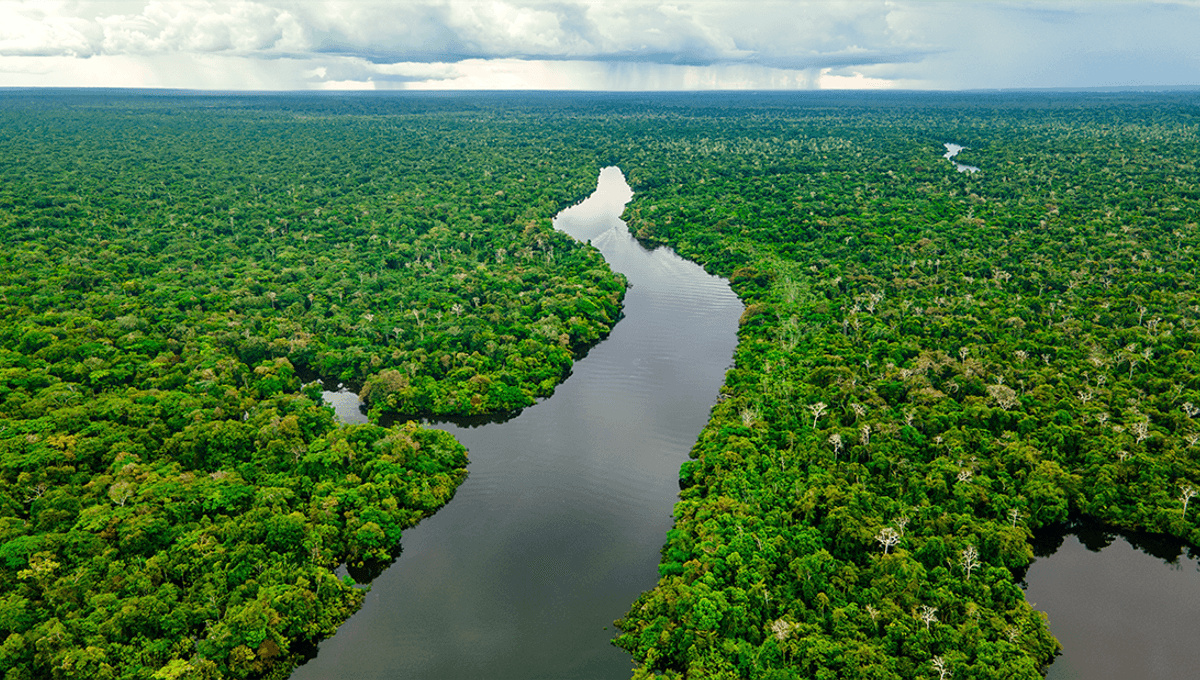
The Amazon river is the largest drainage system in the world in terms of water volume and its drainage basin. The 6,400 kilometer (4,000 mile) river flows from the Andes Mountains of Peru, crossing South America before emptying into the Atlantic Ocean. However, according to a surprising find in 2006 and subsequent geological studies, that has not always been the case – millions of years in the past, the river flowed in the opposite direction.
Russell Mapes, then a graduate student geologist at the University of North Carolina, was attempting to investigate the flow of river sediment from the Andes Mountains all the way to the Atlantic Ocean, when he struck upon something really weird. Looking at sedimentary deposits in the center of South America, he found ancient pieces of the gemstone zircon, which could only have come from the eastern direction, rather than the younger Andes to the west.
“All along the basin, the ages of the mineral grains pointed to very specific locations in central and eastern South America,” Mapes explained in a statement at the time.
That’s odd, as the Amazon famously currently flows from West to East, not East to West. So what brought these deposits of ancient zircon from the East to West? This wasn’t the only evidence that the river may have flowed in the opposite direction, with fossils of marine animals that prefer seawater being found in areas where it wouldn’t be expected that to happen.
Looking into it further, the team determined that the Amazon river really did flow in the opposite direction in the past. That team put the reversal down to a highland area in northeastern South America, which formed during the Cretaceous Period between 65 and 145 million years ago.
“The Amazon is so flat that a tilt in either direction can change things drastically,” Drew Coleman, Mapes’ supervisor, explained.
They suggested that in a time before the Andes had formed, this gradient caused the river (as it was then) to flow from East to West, towards the Purus Arch, while water on the west side of the arch flowed towards the Pacific. According to this team, as these highland areas in the northeast eroded away, water began to flow in the opposite direction. As the Andes grew, a basin formed between the mountains and the arch. Over time, this basin filled, before it eventually spilled over, resulting in the direction of flow we see today.
“We think this last change happened within the past five to ten million years, which is really fast, geologically speaking,” Mapes added. “This shows how transient the surface of the earth is.”
While this was a reasonable hypothesis, a later model in 2014 suggested that the rise of the Andes caused them to intercept more clouds, and the subsequent flow of rain caused erosion, resulting in the Pebas wetlands. Eventually, on timescales which fit with the reversal around 10 million years ago, sediment buildup raised the area, resulting in the reversed flow of the Amazon river.
More study will hopefully shed light on the exact mechanism of the reversal, but the evidence shows that the great Amazon river once flowed in the opposite direction.
Source Link: The Amazon River Flows Backwards, What Reversed The Flow?